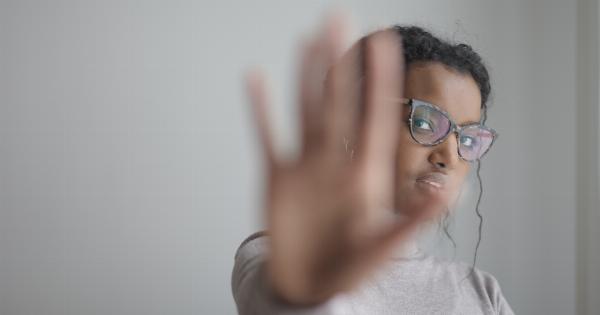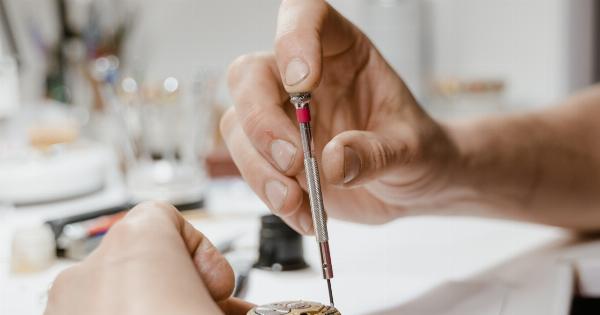The desire to look youthful and attractive is a universal one, but in recent years, there has been a growing trend of young individuals opting for cosmetic procedures such as Botox at an alarmingly early age.
However, doctors and experts in the field are voicing their concerns over this trend, warning that young ones shouldn’t rush into Botox without fully understanding the potential risks and long-term consequences.
1. The rising popularity of Botox among the young
In an age where beauty standards are constantly evolving and heavily influenced by social media platforms, it is not surprising that more and more young people are seeking quick fixes to enhance their appearance.
Botox, a neurotoxic protein derived from a bacterium, has become one of the most commonly performed cosmetic procedures worldwide, with its ability to temporarily reduce the appearance of wrinkles and fine lines.
However, what was once considered a treatment mainly for those in their 40s and above is now increasingly being sought after by individuals in their late teens and early twenties.
Influenced by online beauty influencers and celebrities who showcase flawless skin, plump lips, and wrinkle-free foreheads, young people are often driven by a desire to attain perfection at an age where lines and wrinkles are typically part of the natural aging process.
2. The importance of informed consent
While there may be instances where Botox can be medically necessary for certain conditions, such as treating chronic migraines or excessive sweating, the use of Botox for cosmetic purposes is an entirely different matter.
Doctors argue that there is a need for young individuals to exercise caution and seek proper guidance before rushing into such procedures.
Informed consent is crucial when it comes to any medical or cosmetic intervention. Ideally, individuals need to be fully aware of the potential risks, side effects, alternative options, and the long-term impact of Botox injections.
This includes understanding the temporary nature of the effects, the need for regular maintenance treatments, possible allergic reactions, and potential facial muscle weakening if done improperly or in excessive amounts.
3. The developing facial structure and emotional implications
One of the primary concerns raised by experts against early Botox use is the fact that young individuals’ faces are still developing.
Injecting neurotoxins into delicate facial structures at a time when their bones, muscles, and skin are still maturing can lead to unforeseen consequences.
Furthermore, the emotional implications of starting anti-aging treatments at a young age cannot be ignored. Adolescence and early adulthood are crucial periods of identity formation and self-acceptance.
By succumbing to societal pressures and altering their appearance artificially, young individuals may be negatively impacting their self-esteem and body image, leading to a diminished sense of self-worth and potentially fostering a dangerous cycle of dependency on cosmetic treatments.
4. The role of preventive skincare
Instead of resorting to drastic measures such as Botox, many experts advocate for a proactive approach to skincare, especially among the young demographic.
Prevention and early intervention through good skincare habits can help delay the visible signs of aging and maintain a healthy complexion.
Protecting the skin from harmful sun exposure, adopting a regular skincare routine, moisturizing, and using skin-friendly products are all essential in maintaining youthful-looking skin.
Additionally, a balanced diet, regular exercise, staying well-hydrated, and avoiding habits like smoking and excessive alcohol consumption also contribute significantly to overall skin health.
5. The psychological and cultural factors
The pressures to conform to beauty ideals are not solely imposed by social media and popular culture. Factors such as peer pressure, low self-esteem, and a desire to fit in can also drive young individuals to seek cosmetic interventions like Botox.
It is crucial for society as a whole to foster an environment that promotes acceptance and self-love, rather than encouraging young people to strive for an unattainable notion of perfection.
Promoting diverse beauty standards and reducing the emphasis on physical appearance alone can help mitigate the psychological factors that contribute to the rush for premature Botox treatments.
6. The ethics of practitioners
While it is essential for individuals to make wise choices regarding their own bodies, the ethical responsibility also lies with the practitioners and cosmetic professionals offering Botox treatments.
Doctors and clinicians should prioritize the well-being of their patients and diligently screen them for any underlying psychological issues or unrealistic expectations before administering the neurotoxin.
It is the duty of medical professionals to promote responsible and safe practices within the industry.
Educating patients about the limitations and potential risks of Botox, as well as exploring alternative treatments, is crucial to ensure that they make informed decisions and do not fall prey to impulsive choices that they may later regret.
7. The long-term consequences
Botox injections are not meant to be a permanent solution to the aging process. The effects typically last for a few months before wearing off, requiring repeated injections for maintenance.
By starting Botox at an early age, individuals are effectively committing themselves to lifelong treatments.
Long-term consequences of repetitive Botox use remain largely unknown, as the practice of administering Botox to young individuals is a relatively recent phenomenon.
Potential complications, such as skin thinning, muscle atrophy, and an increased reliance on cosmetic procedures, could become more prevalent as this generation ages.
8. Alternatives to Botox
Instead of diving headfirst into Botox injections, young individuals can explore numerous alternatives to achieve healthy, vibrant skin.
Non-invasive treatments such as chemical peels, laser therapy, microdermabrasion, and dermal fillers may provide satisfactory results without the potential risks associated with Botox.
Skincare products with retinoids, hyaluronic acid, and other proven ingredients can also help improve the appearance of the skin and tackle specific concerns without invasive procedures.
Consulting with dermatologists or skincare specialists can assist young individuals in finding the most suitable options for their unique needs.
9. Empowering young individuals with knowledge
To combat the urge to rush into Botox, providing accurate information and education is vital.
Schools, parents, and healthcare professionals should work together to equip young people with the knowledge and tools to understand the implications and risks of cosmetic interventions, ensuring they make educated choices about their bodies.
By fostering a culture of self-acceptance and promoting positive body image, young individuals can be encouraged to embrace their natural beauty and focus on overall well-being rather than seeking perfection through artificial means.
10. Conclusion
The use of Botox among young individuals is a complex and controversial topic. While it may seem appealing to achieve quick results, the potential risks and long-term consequences cannot be overlooked.
It is crucial for young ones to exercise caution, seek guidance, and consider alternative options before deciding to undergo Botox injections.
A society that emphasizes self-acceptance, diverse beauty standards, and proper skincare education can help young individuals develop a healthy relationship with their appearance, free from the pressures of premature aging interventions.
Remember, youth is a beautiful and fleeting time in a person’s life, and it should be celebrated rather than altered artificially.





























